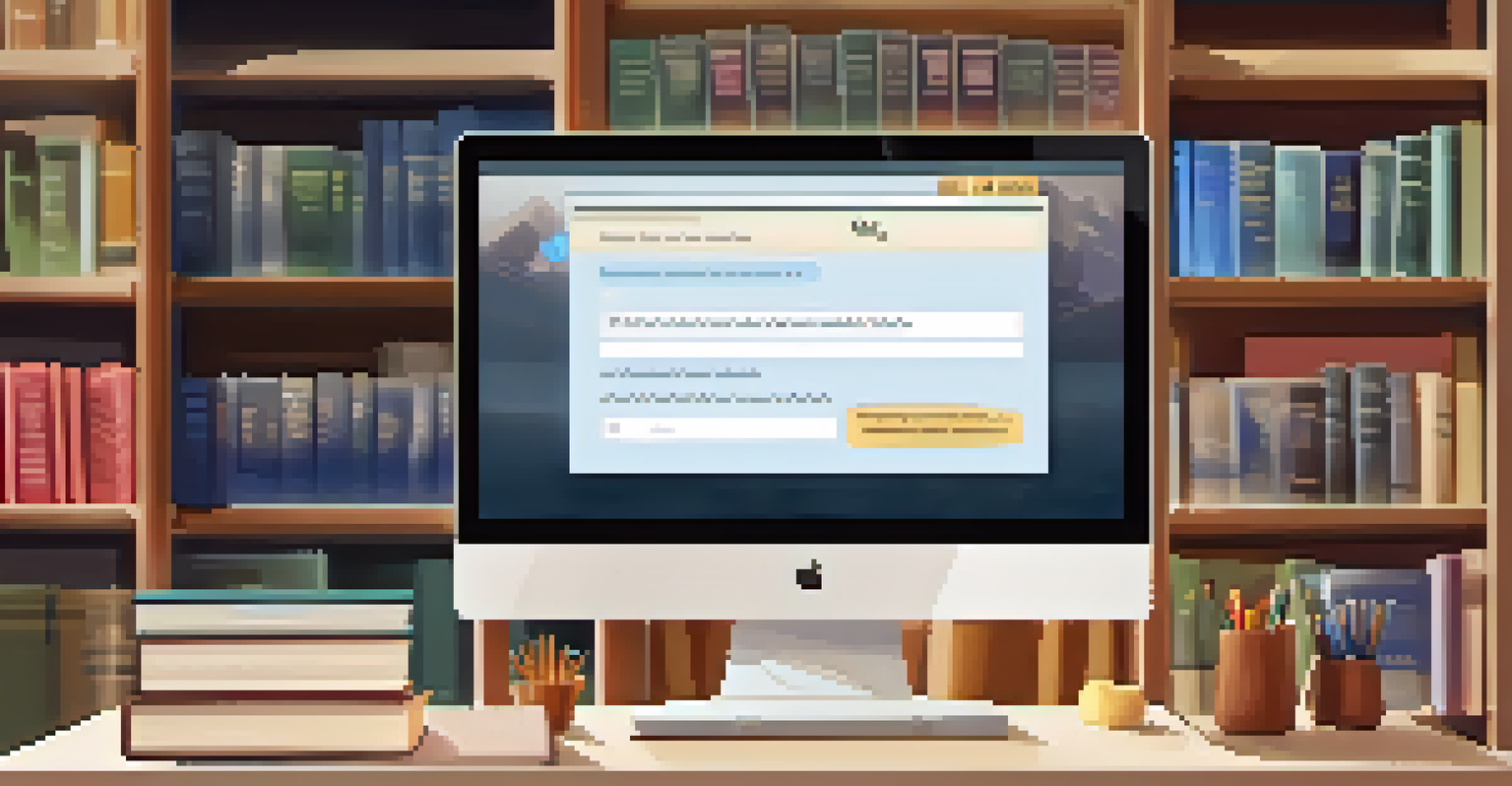Navigating Challenges in Learning Experience Design Workflow

Understanding the Learning Experience Design Process
Learning Experience Design (LXD) is a structured approach to creating effective educational experiences. It emphasizes understanding the learner's needs and crafting content that resonates with them. By grasping the core elements of LXD, designers can better navigate the complexities of their workflow.
Learning is not the product of teaching. Learning is the product of the activity of learners.
The LXD process often involves several phases, including analysis, design, development, implementation, and evaluation. Each phase presents its own challenges, from aligning learning objectives with user needs to ensuring that the final product is engaging and effective. Recognizing these phases helps set the stage for a smoother workflow.
Ultimately, a solid understanding of the LXD process lays the foundation for overcoming the various hurdles that can arise. This knowledge not only fosters a more strategic approach to design but also cultivates collaboration among team members, leading to more innovative solutions.
Identifying Common Challenges in LXD Workflows
Challenges in Learning Experience Design workflows can vary widely, often stemming from factors like tight deadlines, unclear objectives, or resource limitations. For instance, when project goals aren't well-defined, it can lead to misalignment between team members and stakeholders. Identifying these common pitfalls is the first step toward effective problem-solving.

Another frequently encountered challenge is the integration of technology into the learning experience. With rapid advancements in tools and platforms, keeping up can be daunting. Designers may find themselves overwhelmed by options, which can stall progress if not managed properly.
Understanding LXD Process Phases
The Learning Experience Design process involves key phases that help structure effective educational experiences.
Lastly, balancing creativity with practicality is a constant struggle. Designers must create engaging content while adhering to budget constraints and timelines. Recognizing these challenges allows teams to preemptively address them rather than reactively scrambling for solutions later.
Fostering Effective Team Collaboration
Effective collaboration is essential for a successful Learning Experience Design workflow. By promoting open communication and fostering a culture of feedback, teams can capitalize on diverse perspectives and expertise. This collaborative spirit not only enhances creativity but also builds accountability among team members.
The only way to make sense out of change is to plunge into it, move with it, and join the dance.
One way to strengthen collaboration is through regular check-ins and brainstorming sessions. These gatherings encourage team members to voice concerns, share ideas, and build on each other's strengths. Additionally, utilizing collaborative tools can streamline communication and keep everyone on the same page.
Ultimately, a well-collaborated team can navigate challenges more efficiently, ensuring that projects progress smoothly. By prioritizing team dynamics, designers are better equipped to create meaningful learning experiences that resonate with their audience.
Leveraging User Feedback for Improvement
User feedback is a goldmine for refining Learning Experience Design. By actively seeking input from learners, designers can identify strengths and weaknesses in their content and approach. This iterative process not only enhances the learning experience but also fosters a sense of ownership among users.
Implementing feedback mechanisms, like surveys or focus groups, can provide valuable insights. For example, asking learners about their experiences can reveal gaps in understanding or engagement. By listening to their audience, designers can make informed adjustments that align with user preferences.
Importance of Team Collaboration
Fostering effective team collaboration enhances creativity and ensures smoother project execution in Learning Experience Design.
Moreover, analyzing data from user interactions can uncover trends that inform future projects. By leveraging this feedback loop, designers can continually improve their workflows and create more effective learning experiences tailored to their audience's needs.
Balancing Content Quality and Timeliness
In Learning Experience Design, finding the right balance between content quality and timeliness can be challenging. While it’s important to produce high-quality material, rushing the process often leads to oversight and subpar results. Striking this balance is crucial for both learner satisfaction and project success.
One effective strategy is to adopt an agile approach to design. This method encourages iterative development, allowing teams to release smaller, functional components of a project over time. By focusing on incremental improvements, designers can maintain quality while adhering to deadlines.
Additionally, setting clear priorities and timelines can help manage workloads. Designers should outline what elements are essential for a successful launch versus what can be refined later. This approach ensures that critical content is delivered on time without sacrificing overall quality.
Adapting to Technological Changes
The landscape of Learning Experience Design is continually evolving, with new technologies emerging at a rapid pace. Staying current with these advancements is vital for designers looking to create engaging experiences. However, adapting to change can be daunting for teams already juggling multiple projects.
One solution is to foster a culture of continuous learning within the team. Encouraging team members to explore new tools and methods can spark innovation and improve overall workflow. Regular training sessions or workshops can also keep the team updated on industry trends and best practices.
Leveraging User Feedback
Actively seeking user feedback is essential for refining Learning Experience Design and improving learner engagement.
Moreover, embracing flexibility in workflow allows teams to integrate new technologies more seamlessly. By being open to experimentation, designers can discover fresh ways to enhance their work and deliver impactful learning experiences.
Measuring Success in Learning Experience Design
Measuring the success of Learning Experience Design initiatives is crucial for understanding their impact. Key performance indicators (KPIs) can provide valuable insights into learner engagement, retention, and satisfaction. By defining these metrics early on, teams can track progress and adjust their strategies accordingly.
For instance, analyzing completion rates or learner feedback can highlight areas of improvement. If a particular module receives low ratings, it may indicate a need for redesign or additional resources. Regularly assessing these KPIs allows designers to stay aligned with learner needs and expectations.

Ultimately, the goal is to create learning experiences that not only meet educational objectives but also resonate with users. By measuring success through both quantitative and qualitative data, teams can ensure that their efforts translate into meaningful outcomes.
Continuous Improvement in LXD Workflows
Continuous improvement should be at the heart of any Learning Experience Design workflow. By regularly reviewing processes and outcomes, teams can identify opportunities for enhancement. This commitment to growth fosters an adaptive mindset, essential in an ever-changing educational landscape.
One effective approach is to conduct post-project evaluations. These reflections can uncover what worked well and what didn’t, informing future projects and strategies. Encouraging a culture of learning from both successes and failures empowers teams to evolve.
Moreover, integrating feedback loops and staying updated on industry trends can fuel this continuous improvement. By being proactive rather than reactive, teams can consistently refine their workflows, ultimately leading to more impactful learning experiences.